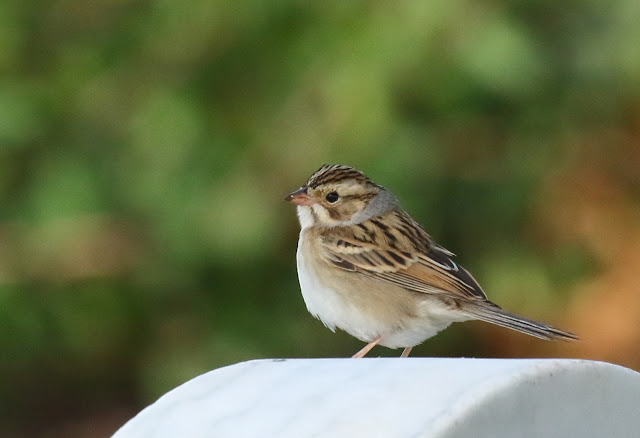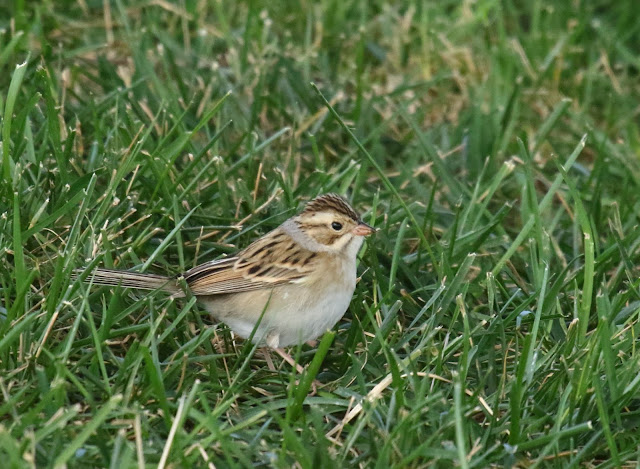Clay-colored Sparrows are similar to Chipping Sparrows. The non-breeding birds that show up in fall and winter are easier to separate than would breeding birds, which are exceedingly rare. The buff and cream face of the non-breeding Clay-colored Sparrows is softer than the more contrasting brown and white faces of Chipping Sparrow.
Two definite marks are important to note for identification purposes. Clay-colored Sparrows have a pale loral region--the immediate feathers between the bill and eye. Chipping Sparrows have dark lores, creating a thin black line of feathers that appears to extend through the eye.
A second separating mark is the wide buff line on the side of the throat. It is thin and not as obvious on Chipping Sparrow. The Sibley Guide to Birds calls this buff line a "mustache" (most wrong) in his textual description of the sparrow, but both "malar" (technically wrong) and "lateral throat stripe" (least wrong) in his Bird Topography section. No wonder birders have trouble describing this part of the face! Sibley discusses the ongoing confusion in "What is the submoustachial?"
[See also my post "Advanced birding means learning the basics."]
 |
| Clay-colored Sparrow. San Diego, California. September 30, 2018. |
Can you tell the difference between rare Clay-colored Sparrows and the more expected Chipping Sparrows?
 |
| Chipping Sparrow. San Diego, California. September 30, 2018. |




No comments:
Post a Comment
I really want to hear from you! I've changed settings (again) in order to try to make commenting easier without opening it up to spammers. Please note, however, that comments to posts older than 14 days will be moderated. Thank you.